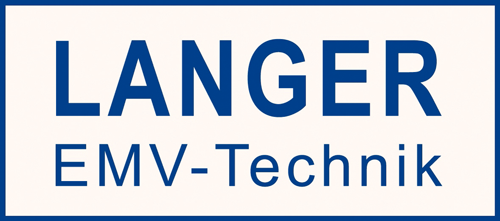MFA-R 0.2-6 set
Near-Field Micro Probe 100 MHz up to 6 GHz




Short description
The MFA-R 0.2-6 near-field micro probe has an extremely small and high resolution probe head. It is suitable for measuring RF magnetic fields up to 6 GHz on components, e.g. close to IC pins, finest conducting paths or smallest SMD components (0603-0201).
The MFA-K 0.2-6 is a hand-guided, active magnetic field micro probe that requires the BT 706 bias tee to operate. In principle, the MFA-K 0.2-6 has the same structure as the MFA-R 0.2-75, differing only in its frequency response.
The coil opening at the probe head is laterally marked with black dots. The near-field micro probe is small and handy. It has a current attenuating sheath and is electrically shielded.
An amplifier stage is integrated into the probe head. The amplifier stage (9 V, 100 mA) is powered via the bias tee. It has an impedance of 50 Ω. The near-field micro probe is connected to a spectrum analyzer or oscilloscope with a 50 Ω input via the BT 706 bias tee. A power supply unit and the bias tee are included in the scope of delivery.
With the help of the correction lines, the probe’s output voltage is converted into either the respective magnetic field or the current running through the conductor.
Scope of delivery
- 1x MFA-R 0.2-6, Near-Field Micro Probe 100 MHz up to 6 GHz
- 1x BT 706, Bias Tee for Langer probes
- 1x SMA-SMA 1 m, SMA-SMA Measuring Cable
- 1x NT FRI EU, Power Supply Unit
- 1x MFA case, System Case Near-Field Probes
- 1x MFA acc, Accessories
Scope of delivery details
-

MFA-R 0.2-6
Near-Field Micro Probe 100 MHz up to 6 GHz
The MFA-R 0.2-6 near-field micro probe has an extremely small and high resolution probe head. It is suitable for measuring RF magnetic fields up to 6 GHz on components, e.g. close to IC pins, finest conducting paths or smallest SMD components (0603-0201).
-

BT 706
Bias Tee for Langer probes
The bias tee is used for the power supply of active near-field probes of the Langer EMV-Technik GmbH, e.g. MFA or ICR. The bias tee is inserted into the signal path between the active near-field probe and the spectrum analyzer or oscilloscope and powered by a plug-in power supply.


![Frequency response [dBµV] / [dBµA/m]](/fileadmin/Bilder300/Disturbance emission_near field probe_MFA-R 0.2-6_frequency response_en_wPZ.png?v=1765798291968)
![H-field correction curve [dBµA/m] / [dBµV]](/fileadmin/Bilder300/Disturbance emission_near field probe_MFA-R 0.2-6_H-field correction curve_en_wPZ.png?v=1765798291968)
![Current correction curve [dBµA] / [dBµV]](/fileadmin/Bilder300/Disturbance emission_near field probe_MFA-R 0.2-6_current correction curve_en_wPZ.png?v=1765798291968)